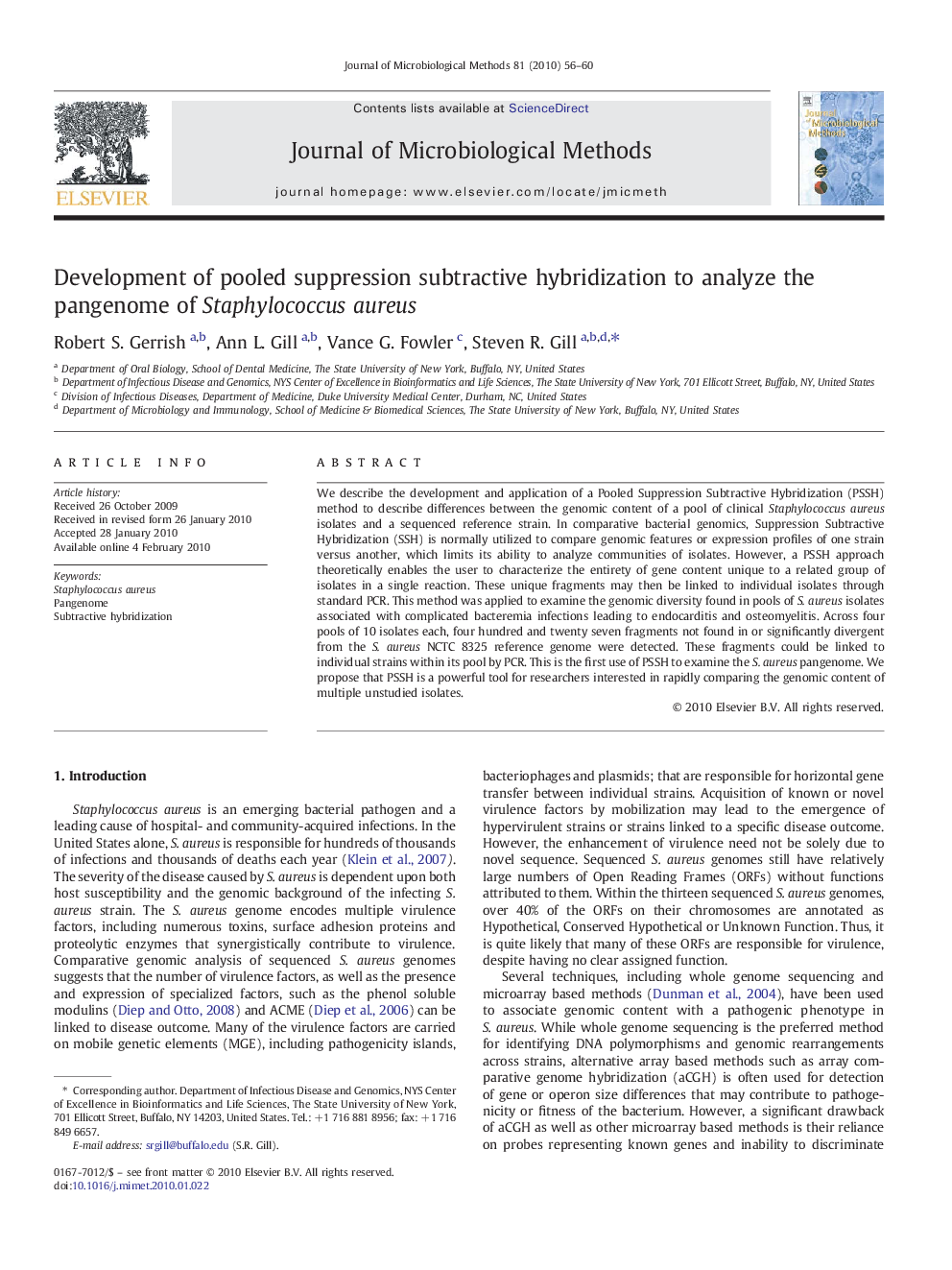| Article ID | Journal | Published Year | Pages | File Type |
|---|---|---|---|---|
| 2090551 | Journal of Microbiological Methods | 2010 | 5 Pages |
Abstract
We describe the development and application of a Pooled Suppression Subtractive Hybridization (PSSH) method to describe differences between the genomic content of a pool of clinical Staphylococcus aureus isolates and a sequenced reference strain. In comparative bacterial genomics, Suppression Subtractive Hybridization (SSH) is normally utilized to compare genomic features or expression profiles of one strain versus another, which limits its ability to analyze communities of isolates. However, a PSSH approach theoretically enables the user to characterize the entirety of gene content unique to a related group of isolates in a single reaction. These unique fragments may then be linked to individual isolates through standard PCR. This method was applied to examine the genomic diversity found in pools of S. aureus isolates associated with complicated bacteremia infections leading to endocarditis and osteomyelitis. Across four pools of 10 isolates each, four hundred and twenty seven fragments not found in or significantly divergent from the S. aureus NCTC 8325 reference genome were detected. These fragments could be linked to individual strains within its pool by PCR. This is the first use of PSSH to examine the S. aureus pangenome. We propose that PSSH is a powerful tool for researchers interested in rapidly comparing the genomic content of multiple unstudied isolates.
Related Topics
Life Sciences
Biochemistry, Genetics and Molecular Biology
Biotechnology
Authors
Robert S. Gerrish, Ann L. Gill, Vance G. Fowler, Steven R. Gill,
